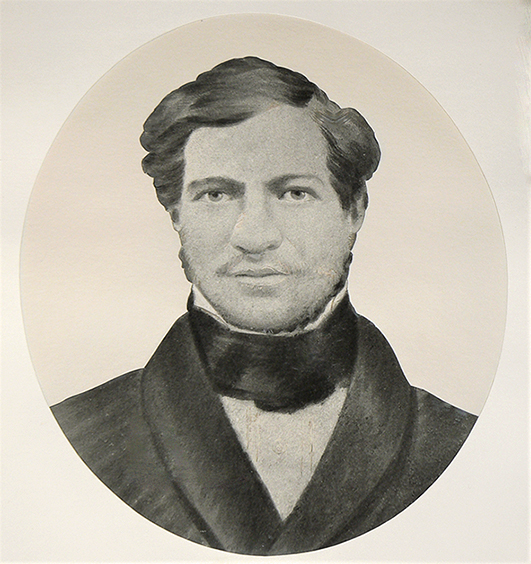When Charles Darwin embarked on the Beagle voyage in 1831, Syms Covington was 'fiddler & boy to Poop-cabin'. Covington kept an illustrated journal of his observations and experiences on the voyage, noting wildlife, landscapes, buildings and people and, frequently, food.
After teaching Covington to shoot and skin birds, Darwin employed him as his servant in 1833. Covington accompanied Darwin on expeditions, assisting with his collections as well as providing meals and drinking water. He carefully labelled and packed specimens that were sent back to England. On the Beagle's return to England in 1836, Darwin kept Covington in his employ, paying him extra for secretarial duties, until Darwin's marriage to Emma Wedgwood in 1839.
Covington then decided to emigrate and to work his passage to Sydney, Australia. Darwin wrote a letter of recommendation for him in 1839, stating that he had 'good reason to believe he is trust worthy in the highest degree. The misfortune of a slight deafness is the sole draw back to his advancement in life.'
It is not known when Covington arrived in Australia, or what he first did there, but in 1841 he married Eliza Twyford (originally from London) at Stroud, New South Wales, 130 miles north of Sydney. By 1843 Covington was working for the Australian Agricultural Company run by Phillip Parker King (whom Darwin had met in Australia in 1836). Covington was working as a clerk in the company's coal depot in Sydney. Darwin took considerable interest in Covington's welfare, even so far removed. In 1843 Darwin dispatched a new ear-trumpet for him from London, and again in 1860.
Covington still assisted Darwin in his work: in 1850 he sent a box of barnacles to London, some collected in Twofold Bay, not far from Pambula, 280 miles south of Sydney, where he then lived. In 1852 Darwin had asked about the gold rush and in 1853 he thanked Covington for his account of his visit to the gold fields, and regretted he had not found a gold nugget. Covington was appointed second postmaster at Pambula in 1854; later he built a property there, not just for his wife and eight children but also providing guest accommodation, a post office, and possibly a general store. Darwin's last letter to Covington was enclosed with a booklet from a London man who claimed to cure deafness (which Darwin described as 'advertising Humbug'). Covington died in Pambula on 19 February 1861, and was buried in the local cemetery.
References:
Australia, Death Index, 1787-1985 (Ancestry.com, accessed 2 May 2017)
Australia, Marriage Index, 1788-1950 (Ancestry.com, accessed 2 May 2017)
'Beagle' diary, p. 81
The National Archives: Public Record Office RG4/272 f. 18v
Nicholas, F. W. and Nicholas, J. M. 2008: 176-86



